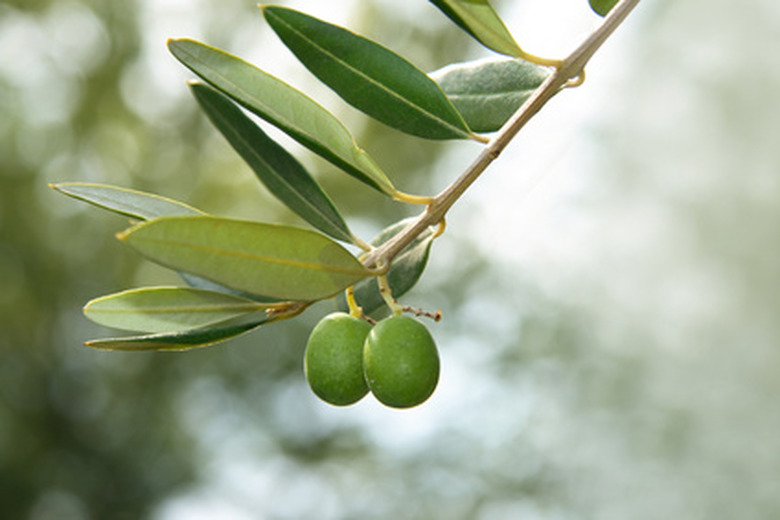How To Grow Olive Trees In Florida
Things Needed
- Rake
- Shovel
- Water-soluble liquid fertilizer
- Slow-release fertilizer
- Compost
- Manure
Olive trees (Olea europaea) have been growing in Florida since the 1700s. Native to the Mediterranean with more than 2,000 cultivars, Florida gardeners living throughout the state can grow an olive tree in their landscape. They do well planted in large containers as well as in the ground, and their high salt tolerance makes them good plantings for coastal areas. Most cultivars grown in Florida can tolerate temperature drops to 20 degrees F for short periods without cold protection. Olive trees make attractive additions to any landscape and gardeners have the extra benefit of harvesting their fruits.
Step 1
Consider the planting site's size and the olive tree's growth habits when selecting a tree. The three most widely grown cultivars grown in Florida are Arbequina, which produces fruit in approximately three years and grows approximately 15 feet tall. Mission is cold hardy, tolerating temperatures to 8 degrees F and growing up to 50 feet tall. Manzanilla is a Spanish variety, growing anywhere from 15 to 30 feet tall at maturity.
- Olive trees (Olea europaea) have been growing in Florida since the 1700s.
- Manzanilla is a Spanish variety, growing anywhere from 15 to 30 feet tall at maturity.
Step 2
Select a planting site that receives six hours of daily sunlight and drains well. Olive trees require growing in full sunlight for best growth and fruit production. They will not tolerate living in saturated conditions and will die.
Step 3
Clear an area approximately 3 feet in diameter free of weeds, grasses and other unwanted vegetative growth. If left in place, they will compete with the olive tree for moisture and nutrients.
Step 4
Dig a hole that is two to three times wider than the olive tree's root ball but is no deeper than the tree is growing in its container. Plant the olive tree in native, Florida soil without amending with compost or manure. Water the hole.
- Select a planting site that receives six hours of daily sunlight and drains well.
- Plant the olive tree in native, Florida soil without amending with compost or manure.
Step 5
Remove the olive tree from its container, being careful not to damage the trunk and root ball. If the tree's roots are root bound, carefully pull them apart so they will grow properly in the planting site.
Step 6
Place the olive tree into the hole and fill halfway with soil. Water the hole and tamp down on the soil with your foot to release air pockets. Fill the remainder of the hole with soil and tamp down on it again.
Step 7
Water the olive tree thoroughly, allowing the water to reach it roots. Continue watering approximately once a week until the tree establishes itself. Olive trees are quite drought-tolerant and considering your local weather conditions, water the olive tree approximately once every one to two weeks.
- Remove the olive tree from its container, being careful not to damage the trunk and root ball.
Step 8
Fertilize the olive tree every three weeks with a water-soluble liquid fertilizer, allowing it to spray over the entire tree's foliage. Use a slow-release fertilizer approximately every three to four months. Apply a top dressing of compost or manure once per year for added nutrients.
Tip
Prune only as needed, as olive trees produce fruit on the previous year's growth. Pests are usually not a problem for olive trees. Use pine straw mulch, as decomposing wood chips take nitrogen from the soil. Keep the mulch 3 inches from the olive tree's trunk.
